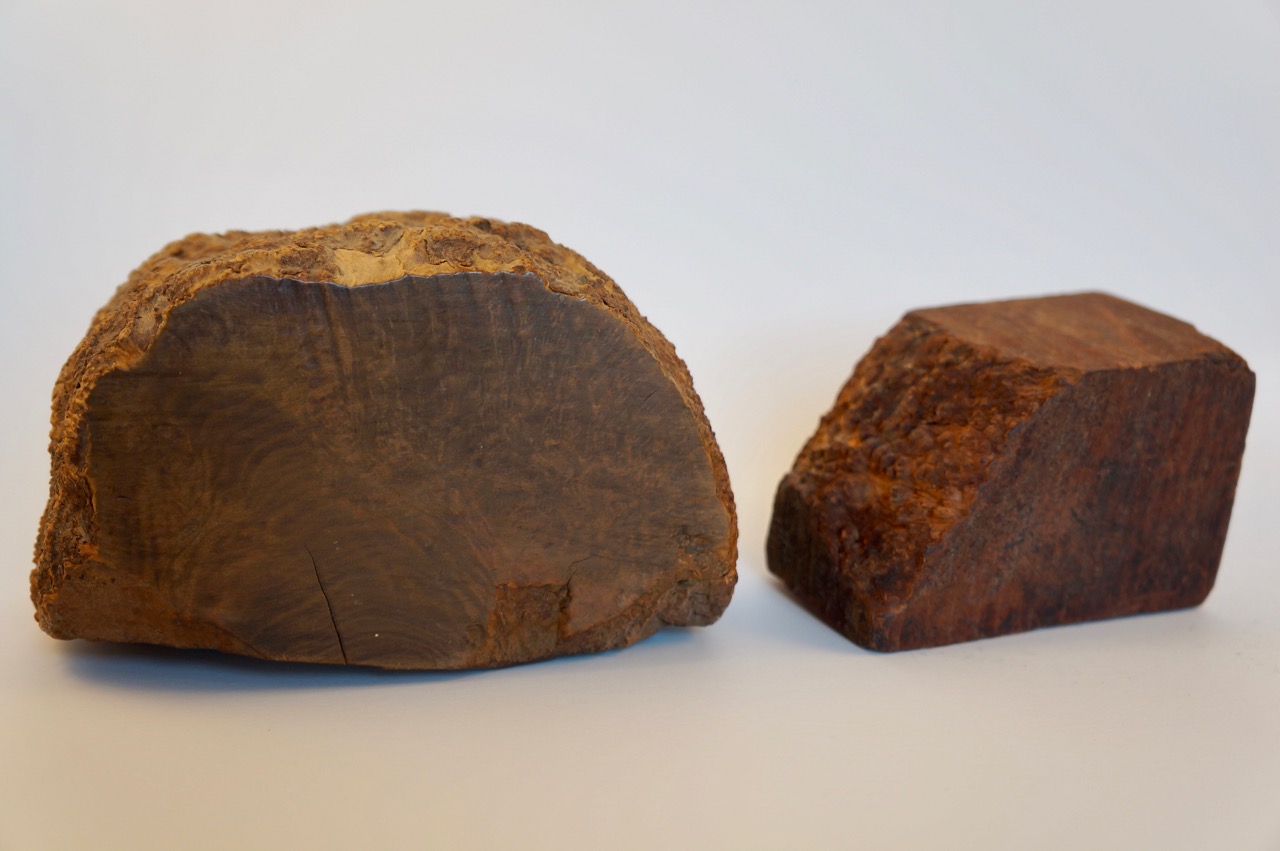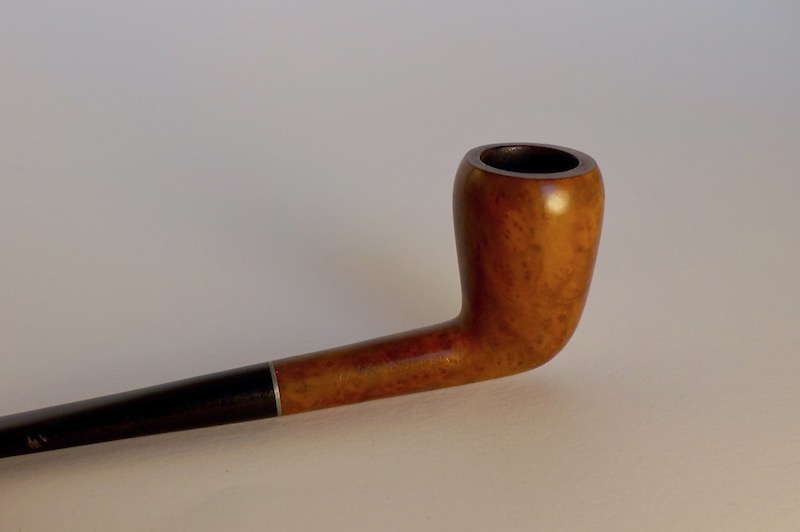BRIAR BURL
The journey from Briar burl to Briar pipe is a long and arduous one but it results in a strikingly beautiful and dense pipe wood. This Wood University article will explore Briar burl’s origin, growing conditions, treatment, and the common types of Briar blanks.
Briar burl is not the wood of the rose briar as you might think, but it is actually the root burl of a type of heath (a plant similar to heather). The name briar comes from the French word for heath, which is bruyère. Briar is also known as heath, bruyère, pipe burl, and Briar burl. The heath plant, Erica arborea, is a shrub and the burl is the growth between the shrub’s roots and its stem. The shrub grows to around 23 feet tall and 4-10 inches in diameter. It’s native to the shrub lands of the Mediterranean Basin, including North Africa, Spain, and Morocco. Gilmer Wood’s Briar burl comes from Spain.
It’s an interesting process from Briar root to pipe blank. The burl grows for at least 40 years before it’s large enough to harvest (when it’s bowling ball to basketball sized). The Briar burl is dug out of the ground by hand to ensure the entire burl is captured. The freshly harvested burls are left whole or cut into pipe blanks and the burls are then boiled in water and slowly dried. The boiling relieves drying stresses that cause splitting and cracking and also darkens the blocks to a richer color. When well air-dried (2-5 years), the burls are cleaned up and prepped for selling whole or cut into slabs, pipe blanks (ebauchons) or plateaux. The heath shrub’s trunk is sometimes milled into blanks for tool handles or used as fuel wood.
It is essential that Briar burls be cleaned by hand before cutting. Taking shortcuts on this step will result in some very dangerous band sawing. Because the burls grow underground, they must be thoroughly cleaned for rocks and dirt. At Gilmer Wood, we use a collection of ice picks and sharpened screwdrivers to dig out the rocks and gravel and then we use wire brushes to remove any remaining detritus and bark. Since they are awkward to clamp or dog, the burls are handheld while sawn on a vertical band saw. For tips on cleaning, watch our video, How to clean a briar burl before cutting.
Briar pipe blanks generally come in two main shapes:
- Ebauchon blocks are roughly rectangular and can have a face from the outside of the burl, although this isn’t always the case. This is the most popular cut for pipes.
- Plateaux blocks are larger than ebauchon blocks and contain more of the outside of the burl where the “bird’s-eye” figure is heavier and more apparent.
The color of Briar heartwood is light tan and oxidizes to a warm reddish-brown. In addition to pipes, Briar burl is used for inlays, pens, knife handles, jewelry pieces, and turnery.
Briar’s history as a European pipe wood comes as a consequence of the French occupation of North Africa in the 1830s. French occupiers sent back the burl and it was first utilized as a pipe wood due to its hardness and heat resistant quality. European pipe smokers puffed away happily until World War II, when the Briar burl supply line from Mediterranean countries to Northern Europe was cut off. Pipe makers switched to beech and mountain laurel, but were left unsatisfied by these inferior pipe woods. In the United States, madrone burl and cherry burl were used as a substitute for Briar, but both woods were inferior, quickly burning out the pipe bowl. Truly, there is no substitute for a Briar burl pipe!
Briar burl is sold in whole burls and pre-cut pieces.




